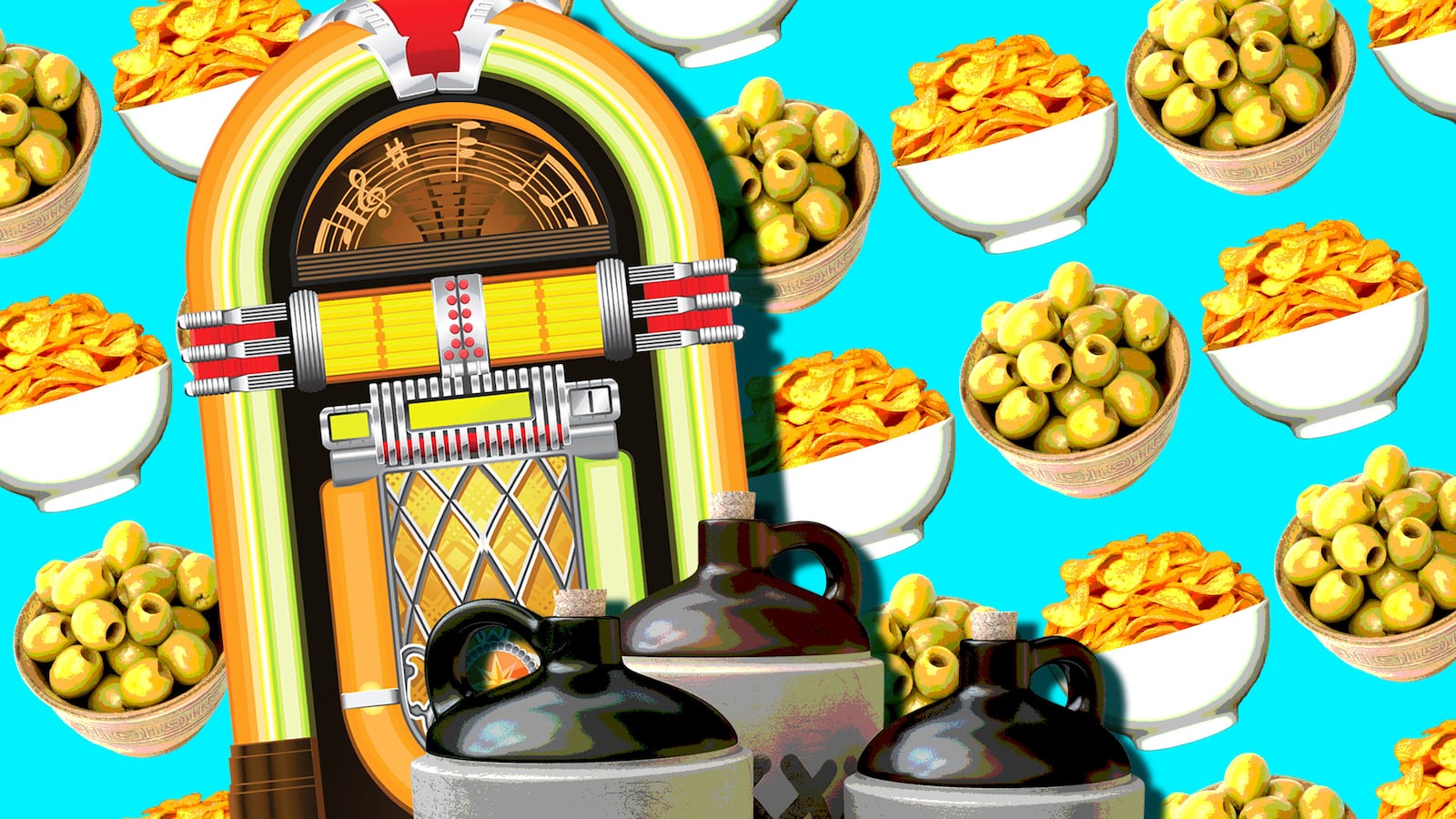This time of year, booze writers usually try to predict what the following year will bring. We can do this because we’re secure in the knowledge that the more devoted our readers are the less likely they are to remember in December what we wrote in January. I’m not going to do that, mostly because I don’t want to think about how 2017 is going to unfold. I suspect I’ll be spending most of it on hold with Blue Cross-Blue Shield, unless I’m cowering in the coal cellar hoping I’ve got enough saltines and canned water to last until the street stops glowing. And who wants to think about stuff like that?
Instead, I’d like to talk about some things I’d like to see—in the world of drinks, I mean, not the one where the President wants to loaf on Twitter all day trolling his enemies (who seem to include the majority of the American people) and his cabinet seems to be more interested in working the American people than working for them.
Ten years ago, I published a book called Imbibe, an in-depth look at how drinks were made in the nineteenth century, before the advent of sour mix and peach-flavored schnapps and anything in a bar coming out of a gun but lead slugs. In it, I had to propose a whole bunch of work-arounds for ingredients you couldn’t get in America. Some, in fact, you couldn’t get anywhere. Now, you can get all of them. High-proof Jamaican Punch rum, rich old genever, every kind of bitters imaginable (and some that, in my naïveté, I would have thought unimaginable). We’ve even got Batavia arrack, crème de violette and aged peach brandy, things not seen here since World War II. In other words, we’ve got plenty of hooch. There, are, however, still a few little things I would appreciate having around, and a couple of other things I’d like to see in bars.
Korn
One is Korn. Not the band—but you knew that. No, here I mean the German grain spirit, made in various parts of that country since the 1500s and unavailable here since we made our own version and called it “rye whiskey.” That was in the 1700s. Nowadays, I have to admit that this isn’t the most fascinating spirit on earth: it’s distilled from rye or barley or a mixture of them, to a pretty high proof, meaning there isn’t a surfeit of flavor left. When it’s aged, it’s in well-used barrels, so it doesn’t get very oaky. If, however, you get a good one, you end up with a smooth, light and creamy spirit with a hint of grain. Sort of a midpoint between Jameson and, say, Absolut. On its own, perhaps not very useful, but when mixed into a cocktail, I’ve found it allows for some lovely, subtle drinks that don’t taste of whiskey but nonetheless have more body and richness than vodka will give you.
Canadian Corn Whisky
Another thing from that same, subtle slice of the whiskey pie that we can’t get is old Canadian corn whisky. Brands up there took their time in embracing the modern whiskey craze and all that it entails, including special bottlings. The last few years, however, have seen distillers bottle up and market some of their blending rye and a couple of their other “flavoring whiskies”—the things they mix with the light corn whisky to make the blends. Over the last couple of years, though, by visiting some of the country’s huge distilleries, I’ve had the chance to taste that corn whisky. It comes in two kinds, it turns out. One of them is essentially barrel-aged vodka: thin and neutral and forgettable. But there’s another kind that some of the distilleries, such as Crown Royal’s huge one in Gimli, north of Winnipeg, make: it’s still 100-percent corn, but it’s distilled to a little lower proof and, after eight years or so of aging in well-used barrels, it has a lot more flavor and a light creaminess that’s damned appealing. It’s like the distilled essence of caramel popcorn. I’m hoping it will get its turn.
Cordial Médoc
There’s one more bottle I’d love to see on liquor store shelves, and that’s Cordial Médoc. One of those venerable local liqueurs in which France used to abound, this brand, made since 1878 by the G. A. Jourde company in Bordeaux, is a brandy-based thing, not oversweet and lightly flavored with various fruits and spices. The company will tell you it’s primarily Curaçao oranges that you taste, but I think there’s a lot of peach in there. In any case, this is one of those things, like maraschino liqueur or a good orange curaçao, where a splash wakes up a simple cocktail and makes it just a wee bit mysterious. I got a couple of the slim, 375-ml bottles that this liqueur comes in early last year from a European website and, looking through the little notebook where I record my cocktail creations such as they are, I seem to have used it in about 30 different drinks. It would be nice to be able to buy it in the U.S.
Italian Bar Snacks
On to more important matters. If you order a cocktail at a café in Italy, the waiter brings you your drink, of course. But invariably he also brings you a little caddy with small dishes of potato chips and olives and, often, some nibbles of pizza or fried tidbits. This may be the most civilized drinking ritual on earth, and I wish American bars would copy this practice. It slows the drinking a bit, gives you something to do with your hands and makes you feel like the establishment wants you to be happy. Plus, the potato chips will give the hipsters something else to work their competitive craftiness on. “And these are our house-made bulgogi-flavored potato chips.” On second thought….
Virtual Jukebox
Finally, there’s the jukebox. I love a good jukebox more than anything else a bar has to offer. If there were a watering hole that had only swill beer, not even very cold, and butterscotch schnapps, but had a working Rock-Ola with the 45 of Ripple’s 1973 classic, “I Don’t Know What It Is But It Sure Is Funky,” I would do all my drinking there. Ideally, of course, I’d be able to also have great drinks with my killer jukebox. But jukeboxes are fragile things—and by “jukebox,” I don’t mean those digital Internet things; those are to 45-rpm or CD jukeboxes as our 45th President is to our 16th (that’s Abraham Lincoln, just so you don’t have to look it up). Even when I find the real McCoy in cocktail bars, they seem to usually be out of order. I guess there aren’t a lot of jukebox mechanics left floating around out there. But as much as I love the physical device, what I love most about the jukebox is the fact that it’s a negotiation between the house and the customer; that, as you’re drinking, you get some control over the music you’re listening to, but there’s not so much control that some tipsy nimrod could abuse it by playing 114 Journey songs in a row. The house picks the pool of songs (and there’s nothing better than a bar that does this well), and you and your fellow lushes pick which and what order.
What I’d like to see, then, is some clever cuss cobble together an iPad app that could do this; one that made the infernal little device into a virtual Rock-Ola: 100 “records,” each with an A-side and a B-side by the same artist, with settings for the house to determine whether the songs are played first-come, first-served or, like the old mechanical jukeboxes, according to which comes next in the order they’re listed in. You could even put a credit card reader on the thing; Lord knows, back in the day I used to spend as much money on the box as I did on beer and Overholt. But if someone does this, I hope they do it quick, ‘cause pretty soon we’re gonna have a whole new crop of punk bands to listen to.





